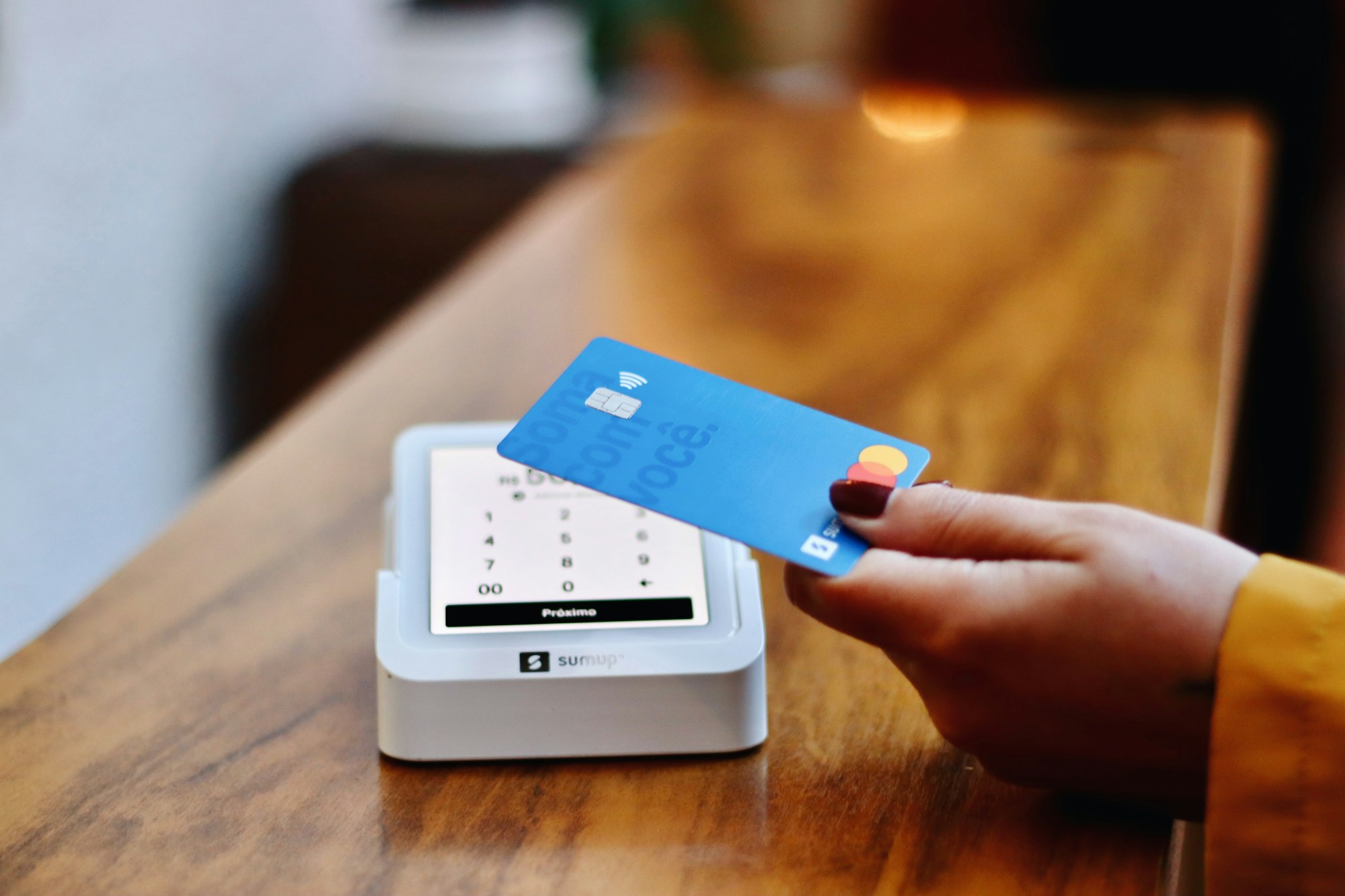Research shows that customers who have their complaints resolved effectively often become more loyal than those who never had problems in the first place. This turns negative experiences into powerful drivers of business growth and revenue generation. You're not just fixing issues—you're building relationships that lead to increased customer lifetime value, positive word-of-mouth referrals, and lower acquisition costs.
Successful businesses understand a crucial truth: complaints are free market research delivered directly to you. They reveal product flaws, service gaps, and operational inefficiencies that you might otherwise spend thousands discovering through traditional research methods.
In this article, you'll discover proven strategies to transform your complaint management process into a revenue-generating engine. You'll learn how to create systems that not only resolve issues but actively convert frustrated customers into brand advocates who drive sustainable growth.
1. Understanding Customer Feedback and Complaints
Customer feedback comes in many forms across your business touchpoints. You receive types of customer feedback through direct channels like surveys, support tickets, and phone calls, as well as indirect sources such as online reviews, social media mentions, and forum discussions. Complaints are the most actionable part of this feedback ecosystem, providing specific details about problems that need immediate attention.
Negative comments should be seen as valuable insights for your business rather than threats to your reputation. Each complaint reveals gaps between customer expectations and your actual delivery. When a customer takes time to voice dissatisfaction, they're offering you free consulting services - identifying exactly where your product or service falls short and how you can improve.
The data speaks volumes: studies show that customers who complain and receive satisfactory resolution often become more loyal than those who never experienced problems. This happens because effective complaint management shows your commitment to customer success.
Common Challenges in Complaint Handling
Businesses face several challenges when it comes to handling complaints:
- Response delays that escalate minor issues into major problems
- Inconsistent resolution processes across different team members
- Lack of complaint tracking systems that prevent pattern recognition
- Defensive attitudes that prioritize blame-shifting over problem-solving
- Insufficient employee empowerment to resolve issues immediately
Your approach to managing complaints will determine whether these interactions lead to increased revenue opportunities or cause customers to leave.
2. Establishing an Effective Customer Complaints Procedure
Creating accessible feedback channels transforms how customers interact with your business when issues arise. Your complaint submission process should eliminate barriers that prevent customers from reaching out directly to you.
Designing User-Friendly Complaint Systems
The most effective complaint procedures require minimal effort from your customers. A well-designed system includes :
- Multiple contact options - online forms, dedicated phone lines, email addresses, and live chat
- Clear instructions on how to submit complaints
- Simple forms that capture essential information without overwhelming customers
- Mobile-optimized interfaces for customers on-the-go
The Power of Internal Complaint Management
When you handle complaints internally before they reach public platforms, you maintain control over the narrative and resolution process. Internal complaint management offers several advantages :
- Prevents negative reviews from appearing on public forums
- Allows for personalized, detailed responses
- Builds direct relationships with dissatisfied customers
- Reduces the risk of viral negative publicity
Practical Channel Examples
Consider implementing these proven accessible feedback channels :
- Dedicated complaint hotlines with trained representatives
- Online complaint forms integrated into your website
- Email ticketing systems that automatically acknowledge receipt
- In-app feedback tools for digital products
- QR codes linking to complaint forms at physical locations
Each channel should connect to a centralized system where your team can track, prioritize, and resolve issues efficiently.

3. Empathetic and Solution-Focused Responses to Complaints
Your empathetic response to customer feedback sets the foundation for transforming complaints into revenue opportunities. When customers voice concerns, they're sharing their emotional experience alongside the technical issue. You need to acknowledge both dimensions to create meaningful resolution.
Validating Customer Emotions Effectively
Start by recognizing the customer's feelings without dismissing their concerns. Phrases like "I understand how frustrating this must be" or "I can see why this situation would be disappointing" demonstrate genuine empathy. You're not just processing a ticket—you're addressing a human experience that impacts their trust in your business.
The Problem-Solving Approach
Once you've acknowledged customer emotions, pivot toward actionable solutions. This shift transforms the conversation from complaint-focused to outcome-oriented :
- Listen completely before proposing fixes
- Ask clarifying questions to understand root causes
- Present specific steps you'll take to resolve the issue
- Provide realistic timelines for implementation
Communication Best Practices
Your tone should remain professional yet warm throughout the resolution process. Respond within 24 hours to show urgency, and avoid scripted language that feels impersonal. When you demonstrate authentic concern paired with concrete action plans, you create opportunities to exceed expectations and build stronger customer relationships that drive long-term value.
4. Following Up to Build Loyalty After Resolving Complaints
Post-resolution follow-ups are crucial for turning a negative experience into an opportunity to strengthen the customer relationship and ensure their continued business. By reaching out within 24-72 hours after resolving an issue, you show customers that you care about their experience and are committed to providing excellent service.
Timing and Method of Follow-Up
To effectively gather feedback after resolving a complaint, it's important to choose the right timing and method for your follow-up communication. Here are some approaches you can use :
- Send email surveys with 2-3 specific questions about how satisfied the customer is with the resolution.
- Make phone calls from your customer success team for high-value accounts to personally check in on their experience.
- Use SMS check-ins for quick satisfaction confirmations, especially if you have customers who prefer text communication.
- Implement in-app notifications within your product or service to request feedback on recent support interactions.
The Power of Follow-Ups
When you proactively reach out to customers after resolving their complaints, it sends a powerful message: their experience matters to you beyond just the transaction. This kind of personal attention has been shown to have a significant impact on customer behavior.
Research indicates that customers who receive follow-up communication tend to spend 23% more than those who do not receive such attention. By consistently following up with customers, you not only reinforce their positive feelings about your brand but also encourage them to make repeat purchases.
Turning Negatives into Positives
In addition to increasing customer spending, follow-up practices can also help turn negative experiences into opportunities for advocacy. When customers initially complain but then receive excellent resolution and follow-up care, they often become some of your strongest promoters.
These satisfied customers are likely to share their positive experiences with others, both through word-of-mouth recommendations and online reviews. As a result, you not only retain these customers but also potentially attract new ones through the power of social proof.
This transformation occurs because you've shown reliability during their moment of frustration. Instead of simply fixing the issue and moving on, you've taken the time and effort to ensure that they are truly satisfied with the outcome.
By implementing post-resolution follow-ups as part of your customer service strategy, you can build stronger relationships with your customers, increase their loyalty, and ultimately drive business growth.

5. Using Complaint Data for Continuous Improvement and Innovation
Analyzing complaint data turns individual complaints into valuable insights for your business. To do this, you need to set up processes that systematically collect every detail about each complaint - including where it came from, what category it falls into, how long it took to resolve, and how satisfied the customer was with the resolution. By organizing this information in a structured way, your teams can spot trends and patterns that would otherwise go unnoticed in random feedback.
Sharing Insights Across Departments
When you share insights from complaint analysis with different departments within your organization, it creates a sense of responsibility and encourages collaboration in finding solutions. Here's how various teams can benefit from these insights :
- Product Development Team : They gain direct access to understanding the pain points experienced by users.
- Design Team : They gain insights into the frustrations customers face with the interface.
- Marketing Teams : They can adjust their messaging based on common misconceptions that arise from complaints.
- Operations Team : They can address any bottlenecks in their workflows that are causing delays in service.
Identifying Root Causes
By analyzing complaint patterns instead of looking at each issue separately, you can uncover the underlying causes behind those complaints. For example :
- If you receive three complaints about a confusing checkout process, it may indicate a flaw in the design.
- If multiple reports mention delayed shipments, it could point to weaknesses in your supply chain.
These identified patterns will help guide strategic decisions that aim to prevent future complaints rather than just fixing symptoms.
Making Data-Driven Product Improvements
When you categorize complaints based on features, frequency, and impact, it allows for data-driven product improvements. This means that instead of making assumptions about what customers find frustrating or problematic, you can prioritize development resources based on actual customer feedback. Companies that utilize complaint analytics have been found to have 23% faster product iteration cycles and 31% higher customer satisfaction scores.
Using Complaint Data as a Competitive Advantage
The most innovative businesses see complaint data as an opportunity to gain a competitive edge. They use customer frustrations as a way to identify gaps in the market and develop solutions that their competitors may not have recognized yet.
6. Proactive Complaint Management to Reduce Customer Churn
Proactive management shifts your strategy from putting out fires to preventing customer issues. This allows you to spot signs of dissatisfaction before customers complain or leave your business. These warning signs often show up in patterns of behavior data that indicate decreasing engagement.
Recognizing Early Warning Signs
Decreased usage patterns are key indicators that a customer may churn. When customers interact less often, make fewer purchases, or skip regular check-ins, it suggests they may be unhappy. Keep an eye on these metrics :
- How often customers log in
- Which features customers are using less
- If there are any delays in payment
- How long customers spend in each session
- If customers are missing their scheduled appointments
Missed responses to your messages also signal a potential churn risk. If customers who used to engage with your emails, surveys, or promotions suddenly stop responding, it's crucial to address this issue promptly.
Strategic Proactive Outreach
Your customer feedback history can guide you in reaching out to customers at risk of churning. Pay special attention to those who have previously raised complaints and tailor your outreach campaigns accordingly. Consider setting up automated alerts for your team whenever specific behavioral thresholds are crossed.
Effective churn reduction strategies include sending personalized messages to check in on customers, offering them exclusive support sessions, or conducting assessments of their account health. These proactive interactions show that you're invested in their success and provide opportunities to resolve problems before they escalate into formal complaints or customer departures.

7. Balancing Public and Private Complaint Handling Strategies for Brand Reputation Management
Your public response strategy determines how potential customers perceive your brand when they witness complaint interactions online. You need to craft responses that demonstrate accountability while directing detailed resolution conversations away from public platforms.
Responding to Complaints in Public
When responding publicly to complaints on social media or review sites, acknowledge the customer's concern with genuine empathy. Avoid defensive language or lengthy explanations that can appear argumentative to observers. Instead, use phrases like :
- "We appreciate you bringing this to our attention"
- "Your experience doesn't reflect our standards"
Transitioning to Private Resolution
The key lies in quickly transitioning to your private resolution process. Include specific contact information or reference numbers in your public response, such as "Please send us a direct message with your order details so we can resolve this immediately." This approach shows other customers that you take complaints seriously while protecting sensitive information.
Benefits of Private Channels
Your private channels allow for deeper investigation and personalized solutions. You can gather detailed information, offer compensation, and build rapport without public scrutiny. This dual approach protects your brand reputation while giving you space to exceed customer expectations.
Monitoring Response Times
Monitor response times across both channels. Public complaints require faster acknowledgment—ideally within 2-4 hours—while private resolution can take longer as you work through complex issues. Document both public and private interactions to ensure consistency and track resolution effectiveness across different platforms.
8. Turning Recurring Complaints into Business Opportunities for Growth and Loyalty Building
Recurring complaints analysis reveals your most valuable business intelligence hiding in plain sight. When multiple customers voice identical concerns, you're witnessing systematic issues that demand strategic attention rather than individual fixes.
Smart businesses track complaint frequency and categorize recurring themes to identify improvement opportunities. A software company receiving repeated complaints about confusing navigation might discover their user interface needs redesigning. An e-commerce retailer facing consistent shipping delay complaints could invest in logistics partnerships that transform their competitive advantage.
These patterns become revenue generators when you address root causes systematically :
- Product Development : Use complaint data to prioritize feature updates that customers actually want
- Service Enhancement : Identify training gaps in your support team based on recurring issues
- Process Optimization : Streamline operations where customers consistently encounter friction
The transformation happens when you communicate improvements back to complainants. Customers who see their feedback implemented become your strongest advocates. They share stories about companies that "actually listen" - generating organic referrals worth thousands in marketing spend.
You can create feedback loops that turn critics into champions by documenting how specific complaints led to meaningful changes. When customers witness their voice driving real improvements, they develop emotional investment in your success. This loyalty translates directly into increased lifetime value, positive reviews, and word-of-mouth recommendations that drive sustainable growth.
Conclusion
Customer loyalty growth through effective complaint management transforms your business from reactive problem-solving to proactive revenue generation. You've discovered how complaints serve as goldmines of customer feedback that drive innovation, strengthen relationships, and boost your bottom line.
The strategies we've explored require commitment and the right infrastructure. Your success depends on implementing :
- Robust CRM systems that track complaint patterns and resolution outcomes
- Comprehensive training programs for customer service agents
- Cross-departmental data sharing protocols
- Proactive monitoring tools across all feedback channels
You can't afford to treat complaints as nuisances when they're actually your customers' most valuable gifts. Each complaint represents a customer who cares enough to help you improve rather than silently walking away to your competitors.
Start building your complaint-to-cash system today. Equip your team with proper tools, establish clear processes, and watch as dissatisfied customers become your most loyal advocates. Your revenue will thank you for turning every complaint into an opportunity for growth.
FAQs (Frequently Asked Questions)
Why is customer feedback crucial for business growth and revenue ?
Customer feedback provides valuable insights into customer experiences, preferences, and pain points. Effective complaint management transforms negative comments into opportunities for improvement, driving business growth and increasing revenue by enhancing customer satisfaction and loyalty.
What are the key components of an effective customer complaints procedure ?
An effective complaints procedure includes accessible feedback channels such as online forms and phone lines, a streamlined internal complaint management system to address issues promptly before they escalate publicly, and clear guidelines that make it easy for customers to submit their concerns.
How can businesses respond empathetically and solution-focused to customer complaints ?
Businesses should acknowledge and validate customer emotions sincerely, shifting the focus from emotional reactions to practical problem-solving. Using the right communication tone and timing during complaint resolution helps build trust and demonstrates commitment to addressing customer needs effectively.
Why is following up with customers after resolving complaints important for loyalty building ?
Post-resolution follow-ups show customers that their feedback is valued beyond just fixing the issue. Soliciting additional feedback after resolution helps convert negative experiences into loyal relationships by reinforcing trust, improving customer retention, and encouraging positive word-of-mouth referrals.
How can analyzing complaint data drive continuous improvement and innovation ?
Collecting and sharing complaint data across teams promotes transparency and accountability. Identifying patterns or root causes through data analysis helps address systemic issues or product flaws proactively, enabling smarter business decisions that enhance products, services, and overall customer satisfaction.
What strategies help reduce customer churn through proactive complaint management ?
Proactive management involves identifying silent dissatisfaction signals such as decreased usage or missed responses early on. Businesses can engage in timely outreach based on customers' feedback history to resolve issues before they lead to churn, thereby maintaining stronger relationships and improving retention rates.




